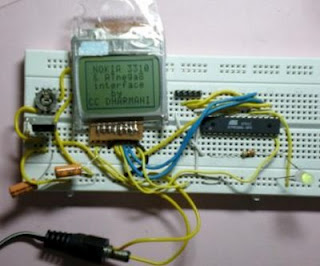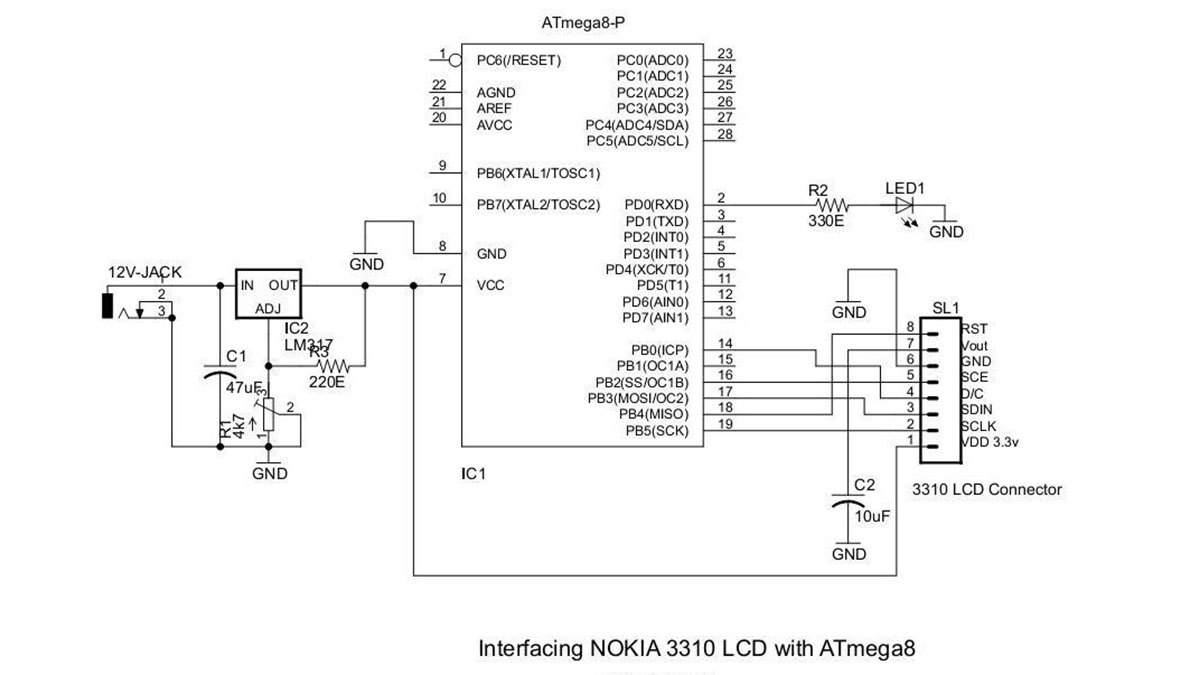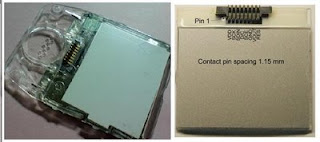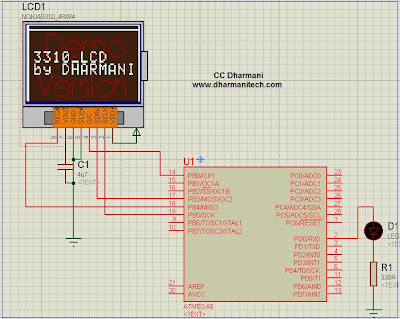Summary of NOKIA 3310 LCD interfacing with ATmega8
The article discusses using the Nokia 3310 LCD as a low-cost graphic display alternative for projects, specifically interfacing it with an ATmega8 microcontroller via SPI, which saves pins. The LCD operates at 3.3V, supplied here by the adjustable LM317 regulator. A small custom PCB connects the LCD's touch-type connector to the microcontroller. The setup includes an LED indicator to confirm microcontroller operation. The project uses C programming with ICCAVR compiler, providing a dedicated library for easy display control, making it an affordable and flexible graphic display option.
Parts used in the Nokia 3310 LCD Interfacing with ATmega8 Project:
- Nokia 3310 LCD
- ATmega8 microcontroller
- LM317 adjustable voltage regulator
- LED
- Custom connector PCB
- Cello tapes (for mounting PCB)
- Proteus ISIS simulation software (for testing)
The NOKIA 3310 LCD provides a really low-cost solution to add a small graphic display into your project and also good for learning purpose. The LCD is SPI bus compatible, saving many pins for other uses. It operates at 3.3v.Here is a small circuit for interfacing the 3310 LCD with AVR microcontroller ATmega8. The schematic includes LCD connection with SPI port of ATmega8 with other connections required by LCD. The 3.3v is generated using adjustable voltage regulator LM317 (I was not having any 3.3v regulator at the moment). An LED is also connected with microcontroller just for making sure that the controller is working, particularly when you don’t see anything on the display!
Here is the schematic and the pin details of the LCD (click on the image to enlarge it):
The connector of LCD is ‘touch’ type. So, I made a small connecor PCB with tracks touching to the pins of LCD. The pcb was pasted at backside of LCD using cello tapes as shown in the back-view image
Here is a testing with Proteus ISIS Simulation:
The program routines are written in C with ICCAVR compiler. I’ve created a library for this display. The low-cost, easy availability has made me really like this display.
Read More : NOKIA 3310 LCD interfacing with ATmega8





